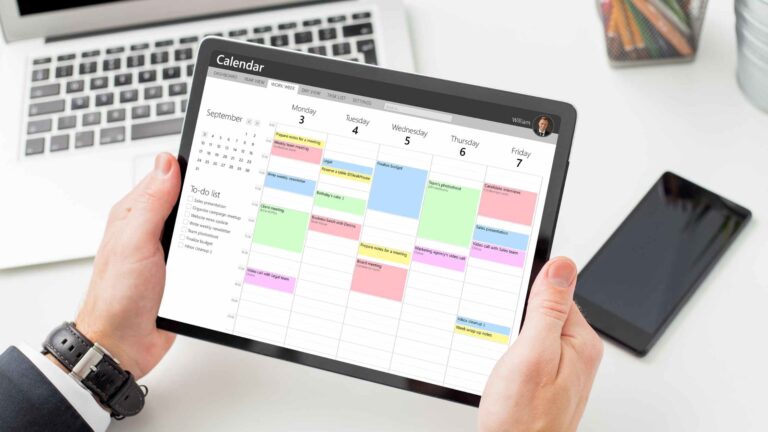One of the most common complaints I hear from team members is that they have too many meetings. I’m sure many of you have heard it too or maybe even said, this meeting could’ve been an email. As a project manager, one of the most important aspects of my job is to ensure that the team is engaged and motivated during meetings. But let’s face it, meetings can be boring, tedious, and unproductive if not properly facilitated.
Meetings are an important part of any project, but it’s crucial to recognize that the bulk of the work takes place outside of these gatherings. As Thomas Sowell once said, “People who enjoy meetings should not be in charge of anything.” While meetings offer a chance for team members to come together, exchange ideas, and reach decisions, it’s important to remember that most of the actual work happens elsewhere. Failing to recognize this fact can lead to meetings becoming a distraction from the real work at hand. However, if effectively managed, meetings can help keep everyone aligned and focused on the project’s goals.
Before scheduling a meeting, it is important to ask yourself what the objective is, who needs to be there, and what will be accomplished. If you can’t answer these questions, it might be best to skip the meeting. Not every meeting is necessary, and sometimes it’s better to cancel them altogether. Consider other forms of communication like email or instant messaging, these can be just as effective and less time consuming.
Here are some tips I have used to keep teams engaged during meetings.
- Set Clear Goals and Objectives – Setting clear goals and objectives for each meeting is essential for keeping the team focused and engaged. Before the meeting, I often send an email requesting topics for discussion. Additionally, you can ask specific team members to contribute to the discussion based on their expertise or responsibilities. This not only ensures that all relevant viewpoints are heard but also helps team members feel valued and engaged in the process.
- Set an Agenda and Stick to It – In my experience, one of the biggest mistakes that project managers make is to start meetings without a clear agenda. Without a plan, meetings can easily become unfocused and unproductive. Before every meeting, take the time to create a clear agenda that outlines the topics to be covered and the time allotted for each. Share this agenda with your team members in advance so that they can come to the meeting prepared. Don’t be afraid to use a parking lot or defer discussions that are taking too long. It’s also important to capture actions items/next steps.
- Encourage Active Participation – As a project manager, it’s your responsibility to encourage participation and collaboration during meetings. Make sure to invite everyone to contribute to the discussion and avoid monopolizing the conversation. Encourage team members to share their ideas and ask questions. Don’t be afraid to call on individuals who may be less vocal or who are new to the team to contribute to the discussion. One way, I have done this is to assign roles to different team members for each meeting. For example, you could have a note-taker who is responsible for recording meeting minutes and action items, a timekeeper who ensures that the meeting stays on schedule, and a facilitator who leads the discussion and encourages participation from all team members. It is important to listen to your team members’ feedback and suggestions and incorporate their ideas into the discussion. This helps to create a sense of collaboration and teamwork. Use two-way communication to encourage feedback, questions, and ideas from everyone on the team.
- Use Visual Aids – Visual aids can be incredibly effective in engaging your team during meetings. I have used OneNote, Word, slides, charts, or diagrams to illustrate my points and help team members visualize the information. This can be especially helpful for complex or technical topics. Make sure to keep your visuals simple and easy to understand. Avoid overloading your slides with too much information. There is nothing worse than a busy slide with small font.
- Keep It Short and Sweet – Nobody wants to sit through a long and drawn-out meeting. People tune out and start multi-tasking. As a project manager, it’s your responsibility to keep your meetings short and to the point. Now that many of us are working with remote teams, it is even more important to set meeting times based on the content and the audience. A fifteen-minute huddle can be as effective as an hour-long meeting. Try to keep your meetings under an hour if possible and avoid scheduling back-to-back meetings that leave your team members feeling burnt out. When a longer meeting is needed, I have found 45-50 min meetings to be effective. If you have a lot of information to cover, consider breaking it up into shorter, more focused meetings.
- Be Engaging and Energetic – As a project manager, one of your key responsibilities is to lead and inspire your team to achieve their goals. I will be the first to admit you don’t always feel energetic. However, being engaging and energetic can help you build a positive and productive team culture, boost morale, and motivate your team to give their best effort. Your energy and enthusiasm can be contagious. Varying your tone and pace can also help keep your team members engaged.
- Keep It Fun – Meetings don’t have to be boring. Use humor, team-building exercises, or other techniques to keep things light and fun. This can help to create a positive and engaging atmosphere that encourages participation and collaboration.
Engaging project management meetings can be challenging to achieve, but it’s worth the effort. Remember, teamwork makes the dream work, keep your meetings fun, informative, and engaging, and your team will be more likely to look forward to them. By following these tips and leading by example, project managers you can create a culture of engagement and collaboration, leading to more successful projects and happier, more motivated teams.



